Deep in India’s West Bengal state, nestled in the foothills of the Himalayan Mountains, lies the town of Darjeeling – a town that’s well-known for being one of the best destinations in the world for photographers. Darjeeling’s breathtaking melding of stunning alpine views and sleepy mountain towns makes it the perfect setting for any photographer who’s looking to snap some picturesque shots of both old-world and new-world influences and built and natural environments – and how these opposing pairs can (and inevitably do) intersect.
From the black tea plantations to the history Toy Train that snakes its way through the mountains, to the gorgeous, awe-inspiring sight of the towering Himalayas themselves, there is no shortage of opportunities to get the best images from a trip to West India – whether you are looking for the perfect material to experiment with your photo editing software or a photo collage maker, or to create a full-fledged video documentary akin to the works of David Attenborough.
So how can you document Darjeeling in all its majesty either as a photographer or cinematographer? Well, we’ll be answering just that question today, namely by sharing our top Darjeeling destinations for photographers looking to truly capture all this serene mountain locale has to offer.
Here is our definitive guide to Darjeeling and the delights that await in West Bengal, providing you with a road map of the essential destinations to bring your camera gear and video and photo editing essentials.
The Darjeeling Ropeway
Our first tip is to ensure that you can get a good preliminary aerial view of the town before you even start snapping. That’s why a trip to the Darjeeling Ropeway should absolutely be the first stop of all photographers visiting the wider Darjeeling region.
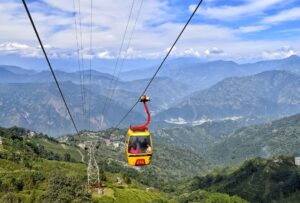
Darjeeling has earned the nickname ‘The Queen of Hills’ because of its majestic topography, so it makes sense that photographers want to have the best possible vantage point to capture the true beauty of this part of the world. Thankfully, the Darjeeling Ropeway does actually provide everything you need – namely a 5km cable car trip that provides panoramic views, from the snow-capped mountains to the sprawling valleys beneath, and plenty of safety and security while you snap away.
Also named the Rangreet Valley Cable Car, it started from humble beginnings back in 1968 with just a single car that traveled in just a single direction. Today, there are 16 cars running in both directions across the Darjeeling Ropeway, providing plenty of opportunity for photographers to spend a whole day or more capturing the best possible shots in general comfort and with minimal risks of injury.
Just be aware that peak season brings plenty of tourists to the Darjeeling Ropeway so you might want to factor that in because the cars can get pretty crowded and there can be long lines to gain access to them. The Darjeeling region presents fantastic views year-round, so rest assured there’s still plenty to see even if you’re looking to travel during the off-season.
If you are traveling during the off-season, however, we recommend checking local weather forecasts before heading to any higher elevation points – just to make sure that there’s enough visibility for you to snap some panoramic pics. The clouds can often get quite low year-round across the wider Darjeeling region, and blankets of fog may get in the way of the type of shots you’re looking to capture. However, in some cases, the fog may even enhance your final shots.
Dali Monastery (Dali Gompa)
For photographers wanting to get the most authentic images of Tibetan monks, a visit to the Dali Monastery is another absolute must. Also known as the Druk Thupten Sangag Choeling Monastery, this charming Buddhist monastery is nestled amongst the crags and snow-capped peaks of the lower Himalayan mountains. Its higher vantage point and breathtaking views offer the best way to get shots of the rugged region without having to trek deep into the Tibetan mountains.
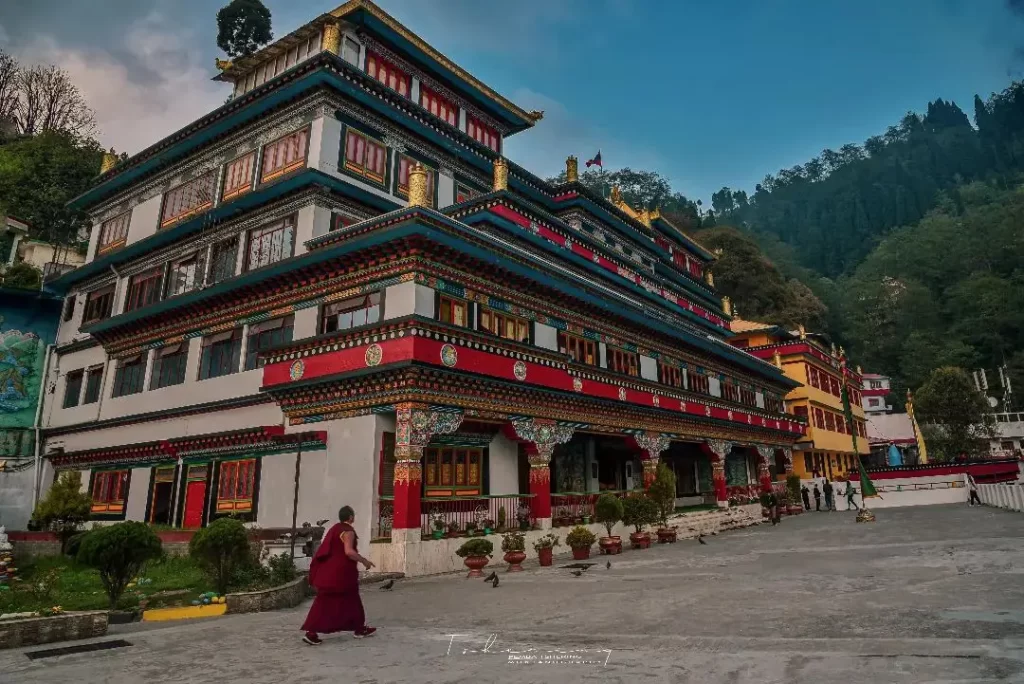
For those visiting the Darjeeling region, you’ll be happy to hear that the Dali Gomba is located just 5 km from Darjeeling town, making this particular attraction super accessible for tourists looking to pay their respects to the region’s Buddhist teachers, or even those looking to take in the amazing views for themselves. This monastery was built in 1971 and provides visitors a genuine look at the unique culture and daily routines of the region’s elusive Tibetan monks – and all in a modern and easy-to-access facility.
Just because this monastery is located closer to the main city and is relatively young compared to the long history of the Tibetan Monks, that doesn’t mean it lacks authenticity. In fact, the Dali Monastery actually happens to be the home base for Drukchen Rimpoche the XII, who is the supreme head of the Kagyupa sect of Buddhists and was inaugurated by His Holiness The Dalai Lama in 1993 who spent three days teaching the monks there.
Be aware that you’re going to have to lean heavily into your photography skills and pack lean for this rich cultural experience. There are other rules and policies in place, with professional photographers typically required to gain permission in advance if they’re looking to take photos within the monastery’s walls. However, if you communicate well, are respectful towards the monks and other occupants of the region, and maintain a proactive approach to securing permission from local officials, you should be able to visit the Dali Monastery with your camera gear in tow with minimal fuss.
Happy Valley Tea Estate
One of the leading reasons Happy Valley has to be on any photographer’s bucket list is the fact that you have complete authorization to snap the tea factory itself, the tea gardens, and the picturesque, natural surroundings. And there truly is so much to see in this sun-kissed little corner of the greater Darjeeling region.
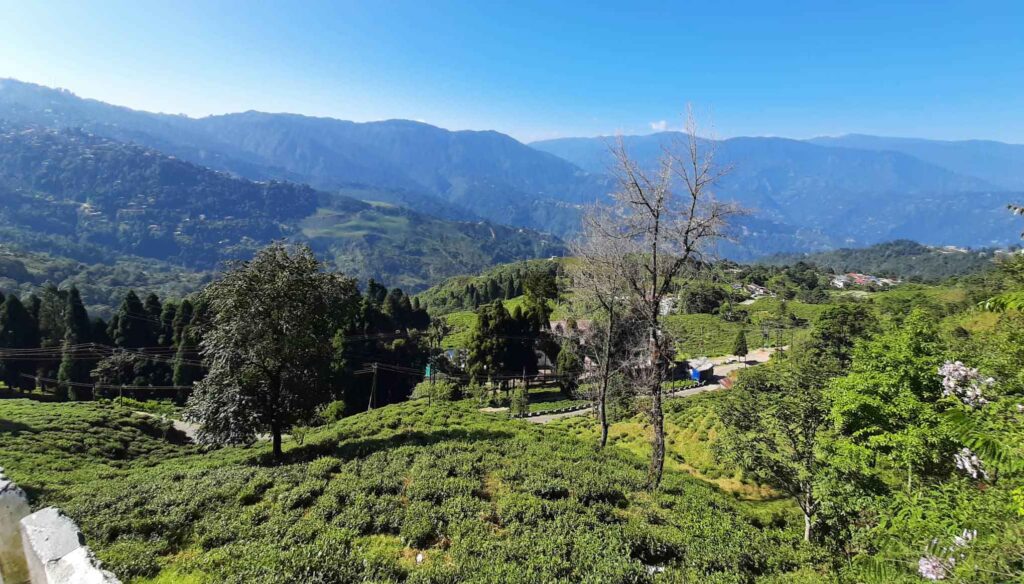
In fact, even if the weather is cold and foggy, being able to sample a fresh cup of Darjeeling tea is reason enough to visit this gorgeous little locale. Darjeeling tea is regarded as some of the finest in the world and it is produced here across 87 different gardens around the city – however, it’s the plantation or garden located in Darjeeling itself that you’d probably want to focus on. This unique tea garden features guided tours of the garden and the factory – they will even pick you up and drop you home from your accommodation for free. And at the end of the day, you can even bring some locally grown and processed tea home with you. Simply put, there’s no better opportunity to get a serious up close and personal look into the age-old processes used to produce some of the world’s finest teas.
As the tea plantation in Darjeeling started all the way back in 1850, visiting the Happy Valley Tea Estate will also give you a window into the region’s rich agrarian history, on top of putting you right in the middle of some of the most beautiful countryside in all of India to capture. So get the word out about the Happy Valley Tea Estate! Put it in your documentary, or come up with a great Instagram caption to share your tea garden experience with others who may want to come and savor the fruits of the Darjeeling region for themselves.
Tiger Hill
Standing tall at 8,442 feet above sea level, Tiger Hill is majestic to snap all on its own. But this popular tourist attraction in Darjeeling is famous for another reason – the glorious views it gives visitors of nearby Mt. Everest, Kanchenjunga, and other peaks. So long as you don’t mind a bit of a hike (that’s nothing compared to scaling Mt. Everest), you should be able to snap some truly mesmerizing shots from the peak of Tiger Hill.
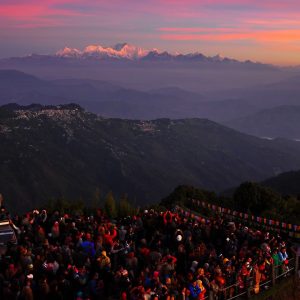
And speaking of Everest, it’s no secret that Mt. Everest is notorious for its danger and is only accessible to the truly hardy and adventurous. Contrastingly, Tiger Hill gives the average tourist the best vantage point to soak up all the majesty of the mighty Himalayas. Of course, it is also the perfect place for photographers to get the perfect shots of the world’s largest mountain squarely in frame.
A quick disclaimer, however: yes, Tiger Hill is a lot gentler of an ascent than other peaks – but it’s still a tough climb and can be steep at times. If you’re not a confident hiker, then we strongly advise you embark on your hike as part of a travel party rather than opting for a solo expedition. The same goes for if you’re carrying a particularly heavy load of camera gear. Travelling with fellow climbers can help ensure you can maintain support if you feel you may need it along your journey.
It can also get grippingly cold at the top of the hill, so make sure you start your ascent with all the right cold weather essentials and protective gear (including sunglasses to reduce eye strain caused by solar reflections on the snow!). We also recommend bringing a secure and padded camera bag to ensure that all your camera gear stays well-protected during your ascent.
Darjeeling Himalayan Railway
And last but certainly not least, this guide on the top Darjeeling destinations for photographers would truly be incomplete without mentioning one of the most popular destinations for snapping fast-paced shots and capturing panoramic views: from the platforms or carriage windows of services running along the Darjeeling Himalayan Railway.
If you want the premium photography experience, this is it, the train ride commissioned by movie makers, documentary creators, advertising and marketing forms. In fact, we can confidently say that virtually all the world’s best content creators who want the absolute peak images of the Himalayas will be sure to take this train ride. And before you ask, no this railway wasn’t featured in the Wes Anderson movie “The Darjeeling Limited”, however there’s no doubt that the railway line did inspire some aspects of the film.
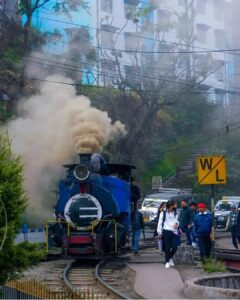
It’s important to note that the services running in the Darjeeling Himalayan Railway can by no means be considered to be modern trains either. In fact, the Darjeeling Himalayan Railway is a UNESCO-listed World Heritage Site in and of itself! With lovingly preserved and serviced steam trains running along this picturesque railway line, the Darjeeling Himalayan Railway is unequivocally steeped in tradition and authenticity, with riders enjoying the genuine four-wheeled locomotive experience of the 19th century while being transported through the mysterious and alluring Himalayan Mountain Ranges.
Simply put, when you book your ticket and jump on one of the timeless steam trains that chug along the expansive network of the Darjeeling Himalayan Railway, you can expect to be taken to the best vantage points of the Himalayas, taking in the best views of the Darjeeling region and of course, capturing plenty of shots of the vintage trains themselves. Jumping aboard the Darjeeling Himalayan Railway really is the best way to soak up the beauty of the entire Darjeeling region.
With the sheer diversity in views and general subject matter across the Darjeeling region, you are genuinely guaranteed to find plenty of enrichment when taking snaps during your time in this breathtaking destination – whether you’re an amateur photographer, a photography enthusiast, or a professional looking to put together a global portfolio.
And here at Inside Darjeeling, we’re naturally of the mindset that this part of the world should be experienced by any photographer or cinematographer looking to find their style. With the melding of old and new, built and organic, and sun and snow, the Darjeeling region truly is one of those few, rare parts of the world where genuine history and tradition prevails, and it doubles up as your safest window to the Himalayas.
So make a trip on your photography expedition to document Darjeeling, and take plenty of time to soak up the local culture and meet the local people along the way. Trust us – you’ll be glad that you did at the end of your journey.

